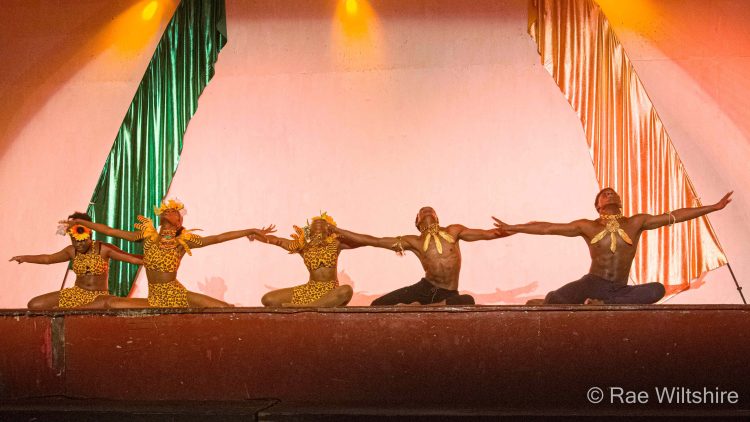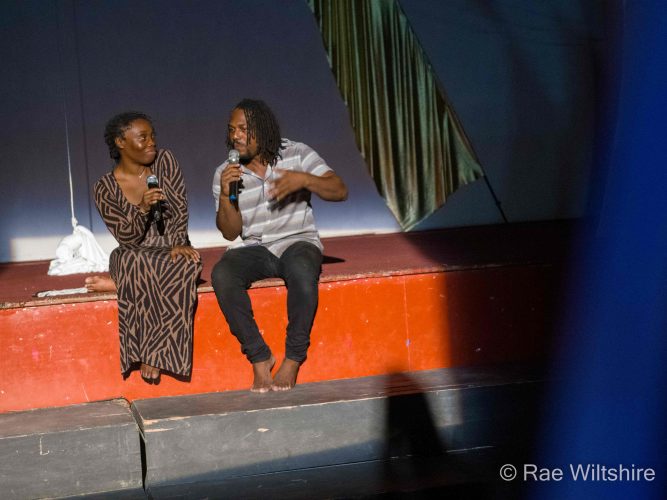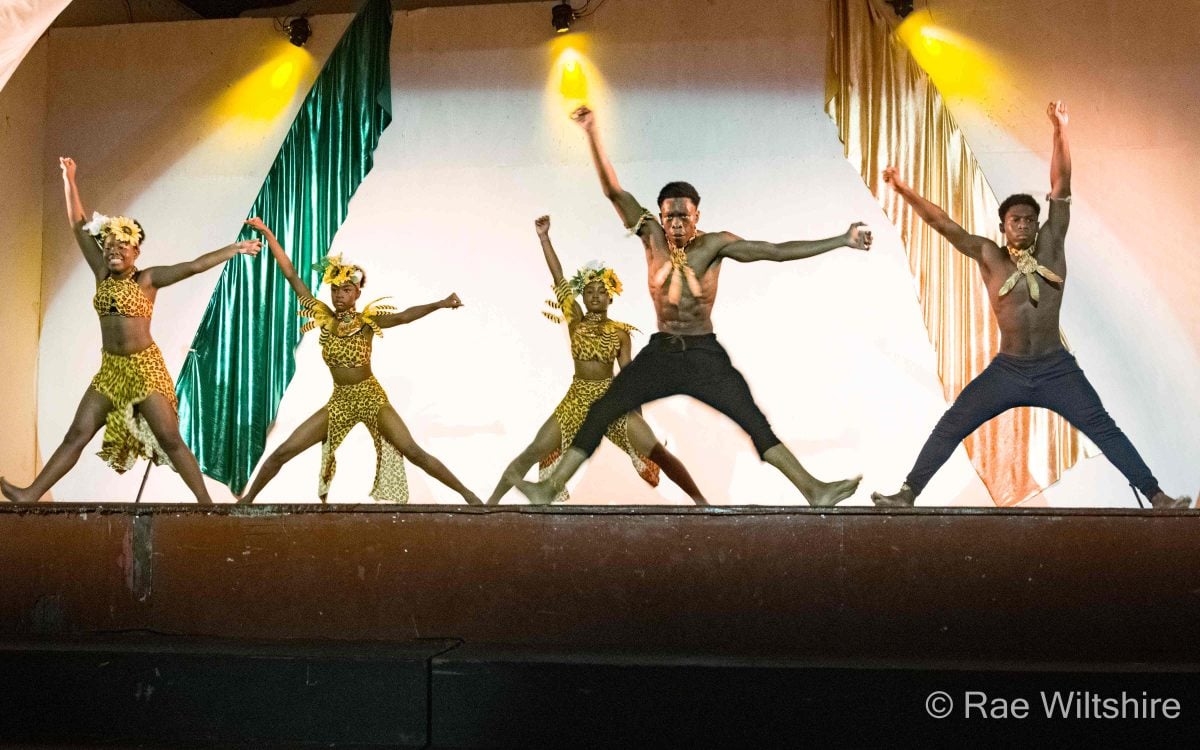The Greens and Golds dance show is now entering its sixth iteration, which is quite an achievement. What makes it even more so is that it’s run by a married couple, Esther and Jonathan Hamer, who push forward despite scarce resources, fuelled solely by their love for dance. Sunday Stabroek recently spoke with Esther, half of the duo behind this production, about the challenges and achievements of the Greens and Golds dance show, which this year will be staged at St Rose’s High School, starting at 7 pm and patrons can pay at the door.
What inspired you to start Kreative Arts, and how did the idea for the Greens and Golds dance show come about?
EH: Kreative Arts was founded by Jonathan, my husband. After a few months, I joined the team, which at the time included several other theatre practitioners. The long-term goal for the group was to be a performing arts company, focusing on training adults to be dancers, actors, and musicians (vocalists). Jonathan and I always wanted to create a showcase for our students, not only to display our talents but theirs as well.


However, fluctuating membership was a big deterrent to hosting an annual production. We did manage to host two productions in the past, but there was a vicious cycle of training a dancer, getting them to a certain level, and then losing them to life changes, like entering relationships or the workforce. This constant turnover made it difficult to maintain consistency.
In 2017, after revamping our classes to focus on younger performers, we decided to try hosting an annual production again. Our hope was that by instilling a love for dance at an earlier age, they would remain committed even as other aspects of their lives changed. We named the production “Greens and Golds,” with “Greens” representing the younger, less experienced dancers and “Golds” representing our seasoned, more mature dancers. Each year, the show has a different theme, and this year’s theme is “Blockbuster!” where we focus on dance in movies.
How have your classes evolved over time, and what has been the most rewarding part of working with children in dance and the arts?
EH: Initially, we were quite rigid with our structure, mainly targeting specific dance forms and focusing on young adult dancers. Over time, we’ve softened that approach and now try to set more realistic goals for our students based on their availability, disabilities, injuries, and other peculiarities. Our classes are structured around monthly evaluations, and we maintain open communication with parents to keep them informed about their child’s development.
We have five levels of dancers at Kreative Arts: Debutante 1 (ages 2-8), Debutante 2 (ages 9-13), Debutante 3 (ages 14-19, which is our main performance branch), and an adult class for those 20 and older. New students go through a semi-audition and evaluation before being placed in one of the appropriate age groups or in a newcomer’s class, where they can develop their technique and strength.
What are the central themes or stories explored in this year’s Greens and Golds dance show?
EH: This year’s theme is “Blockbuster!” We’re focusing on iconic dance scenes in movies. The first half of the show will feature a short dance film conceptualised, written, directed, and edited by myself, Jonathan, and our daughter, Justine. The second half will feature movie choreography, incorporating a variety of dance styles, cultures, and perspectives.
Jonathan and I have similar goals for dance in Guyana, but we approach things differently, which is what makes our partnership work. I focus on the dancers younger than 13, and Jonathan focuses on the older ones, although we do switch it up from time to time. Our creative direction is a collaborative process—an idea may start with one person, but by the time it’s fully realised, so many people have contributed to it that no one person can claim credit. My hope is that with each production, the children not only learn something new but also gain an appreciation for people, cultures, the arts, and the process.
What challenges have you faced in putting together this year’s show, especially when working with young
performers?
EH: Our two major challenges are regular attendance and finances. Dance is often seen as a hobby in Guyana, something to tire out children so they create less havoc at home, rather than a serious art form. This perception means that many people give it minimal priority and, therefore, minimal time. Also, children’s lives are increasingly filled with academic lessons, which leaves less time for other pursuits like dance.
On the financial side, we’re grateful for our loyal parents and contributors who support us, but I dream big, and sometimes those dreams are beyond what we can afford. Our past productions have been both high and low points for us, but they’ve always been learning experiences. Audience feedback has been pivotal. We’ve done everything from climbing mountains and walking on stilts to recreating a slave ship and performing shadow dances. We take each hurdle in stride, knowing that highs and lows are part of the journey.
How have you seen dance and creative arts impact the children’s confidence,
discipline, or overall growth?
EH: I’ve been told I’m too soft with the children, but over time, I’ve seen many of them grow and improve beyond what even I expected. Discipline is essential for achieving any goal, and it requires commitment and the ability to work well with others. Many of our dancers were introverted when they first joined, but they’ve since blossomed into confident, expressive young people.
One transformation that stands out to me is my son, Ezekiel. He was ill for much of his early childhood, and we initially withheld dance from him because we were focused on his academic performance. But once we allowed him to dance, his social and academic skills began to improve. Dance gave him confidence, and he now teaches classes when we’re unavailable. It’s been amazing to watch him grow from a premature baby to a young man who contributes to our work.
How do you and Jonathan complement each other’s skills in running Kreative Arts? What’s the dynamic like between you two as both creative and business partners?
RH: Jonathan is firm, and I’m softer in my approach to teaching. He usually starts with a complete vision, while I tend to build my ideas as we go along. What we’ve learned over the years is that we both love the art form, and we’ve often prioritised that love over the financial aspects of running a business. We’re only now starting to streamline the business side of things.
What are your future goals for Kreative Arts and the Greens and Golds dance show?
EH: Our ultimate goal is to acquire our own space, a home where performers can explore their craft without the constraints of time. We want to develop a professional performing arts company, where hopefully, dance can become a viable means of income for our members. We also hope to make Greens and Golds a touring production, since it’s currently only staged in Georgetown. We’re also looking into expanding our offerings with stilt walking and acrobatic classes for some of our dancers. Ultimately, we want to share our knowledge with others and help foster an appreciation for performers and the process, even if not every student becomes a professional dancer.





